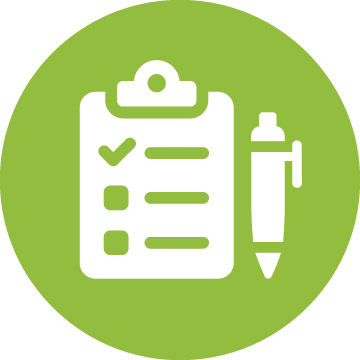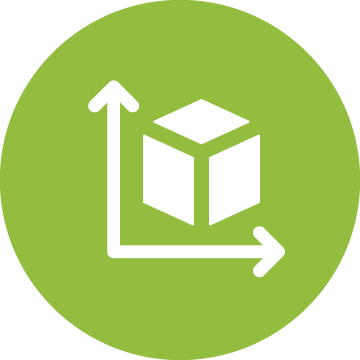
STATE OF THE STUDENT 2025
Getting U.S. Students Back on Track in Math


Five years after Covid-19 disrupted schools, American students are not just recovering slowly—many are falling further behind. This is especially true in math.
However, this is not simply a pandemic problem. The math crisis began over a decade ago and has deepened into a national emergency.
After steady improvement over two decades, math performance in the United States peaked in 2013. Since then, scores have declined and have been in freefall for the lowest-performing students. Nearly four in ten eighth graders now score below Basic on the Nation’s Report Card, and the achievement gap has reached historic highs. The groups in steepest decline include girls, low-income students, Black and Latine students, students with disabilities, and multilingual learners. But across the board, the results are alarming. Students report that math is the subject most likely to make them feel anxious, defeated, or invisible.
now score below Basic on the Nation’s Report Card.
“[I would ask the teacher for help] but it would always be pushed to the side. … Me and one of my friends, we didn’t even do the math final project. It just ended up getting passed. I didn’t really learn anything those last couple months.”
Recent high school graduate, RI, 2023
However, this crisis is solvable.
Math may be one of the most fixable problems in American education, because student math achievement is highly responsive to what happens inside schools—perhaps even more so than reading. The quality of instruction, the strength of the teacher workforce, and the availability of timely support significantly impact math learning. Steady progress and narrowed gaps in math outcomes occurred in the late 1990s and early 2000s. This was likely due to focused efforts to raise achievement expectations, especially for the lowest-performing students.


This report answers two urgent questions:
1. Why is math in such steep decline?
2. what would it take to turn the tide?
Drawing on national assessment data, student voices, practitioner interviews, and a review of recent reforms, we identify both the system-level breakdowns and the bright spots that show what’s possible when it comes to improving math education in the United States.
Key Drivers of Math Decline
Our review of the evidence suggests that at least four policy trends are at play in the math declines.
Research-backed strategies are not reaching the classroom.
Ideological debates have crowded out clarity, with some groups and researchers opposing direct instruction (in which teachers demonstrate or explain procedures or concepts) for struggling students, and a lack of clear guidance for teachers about what the research shows.
Rigorous studies show that schools should emphasize math facts, procedural knowledge, and deeper conceptual thinking, but teachers are unclear about the right balance. Direct instruction—the most evidence-based approach for struggling learners—is too often underused.
Standards and accountability are weakening.
In many states, test scores are inflated, report cards are opaque, and grade inflation misleads families about student progress
The supply of qualified teachers is eroding.
The number of teacher preparation program graduates prepared to teach math fell by 36% between 2012 and 2020. Math vacancies are growing, especially in high-poverty districts.
Systemic rigidity, tracking, and unequal opportunity hinder progress.
Schools are not equipped to serve the growing diversity of student needs. Most operate with outdated models that assume all students can learn the same content at the same pace. Too many students, in particular those from already disadvantaged backgrounds, fall behind early on and never get the chance to take college-track courses. This “leaky pipeline” effect limits students’ access to careers that require advanced math skills.


Our Conclusion
Fixing math education in the United States is a complex equation—no single solution will solve the crisis. But while it may be daunting, the math problem is also eminently solvable. It will require clear goals: There should be national and state-level campaigns and policies to ensure every student is ready for Algebra I by eighth grade.

Solving the math education problem will also require determination from policymakers at every layer of the education system to focus on five mutually reinforcing solutions:


Evidence-based instruction that meets individual needs.
Every student deserves high-quality, explicit instruction grounded in what works. Teachers need clear guidance on balancing conceptual understanding with procedural fluency. They also need real-time data to identify gaps and target instruction. Practices that aren’t backed by evidence should be left behind.

High expectations and transparent accountability.
States must recommit to preparing all students for success in Algebra and beyond. That starts with setting meaningful standards and giving families clear, actionable information about student progress. Schools falling short should be required to adopt evidence-based curricula and supports like explicit instruction and targeted tutoring.

Creative models to address the math teacher shortage
Math learning depends on access to qualified teachers. To attract and retain strong math educators, states should explore bold strategies: differentiated pay, team-teaching models, math specialists, and smarter deployment of existing talent. The goal isn’t just more teachers, but the right people in the right roles.

A new delivery system without dead ends.
The current model—especially for students with missing skills or special education needs—isn’t working. We need flexible pathways with multiple on-ramps, automatic acceleration, and no lower-track dead ends. Students should be able to advance as soon as they’re ready. That means rethinking everything from course structures to assessments and professional development so the whole system works coherently.

Engagement that lasts.
Students need to believe that math matters and that they can succeed. Real-world applications can help—but only when paired with strong instruction. Engagement alone won’t drive learning. It must be part of a broader system that supports student growth every step of the way.
This report suggests that improving math will require reintroducing and modernizing some reforms that were showing progress a decade ago: namely, holding schools accountable for performance and ensuring that quality teachers lead classes. Coherent, evidence-backed instruction is key, as are policies that specifically support high-risk students and promote open access to advanced coursework.
Emerging innovations can also help systems reach more struggling math students, including new AI-powered tools, inventive approaches to staffing, and real-time information for parents about their children’s math skills. In the end, the key will be a commitment to plug the holes in America’s leaking math pipeline so that far more students develop mastery of the basics, access upper-level courses and in-demand careers, and confidently navigate adult life.
We cannot afford to wait.
Math is not just a school subject—it is a foundation foreconomic mobility, civic engagement, and global competitiveness.
The solutions are in reach. The question is whether we will act on them. Let 2025 be the year we treat math education as a solvable equation—and commit to guaranteeing success for every student.

